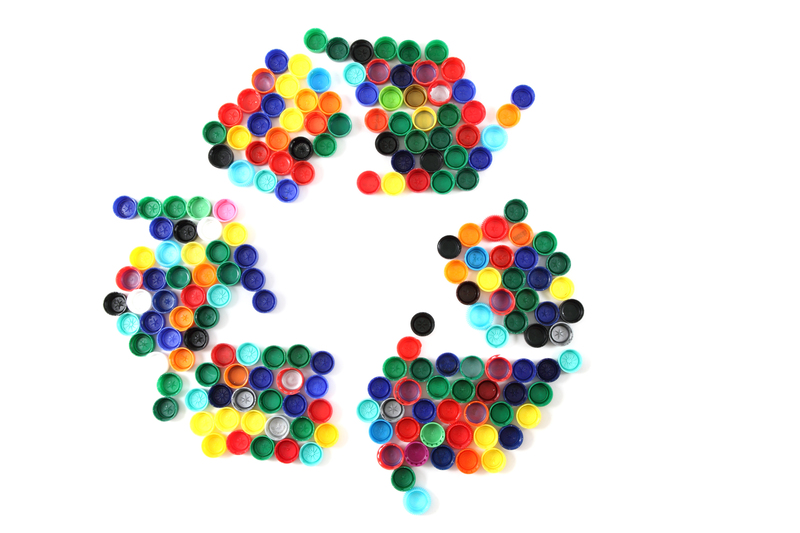Eco-Friendly Tactics for Minimizing Manufacturing Waste
In today's world, where sustainability is more than just a buzzword, minimizing manufacturing waste is a crucial goal for companies striving to become environmentally responsible. With increasing consumer demand for greener practices and stricter government regulations, adopting eco-friendly tactics is essential for modern manufacturers. This comprehensive guide explores innovative strategies that can significantly reduce waste in manufacturing processes while maintaining efficiency and profitability.

Understanding the Impact of Manufacturing Waste
Manufacturing waste poses a significant threat to our planet. It contributes to pollution, greenhouse gas emissions, and resource depletion, impacting ecosystems and human health. Before diving into the solutions, it's important to understand the types of waste that manufacturing operations commonly generate:
- Solid Waste: Includes off-cuts, defective products, and packaging materials.
- Liquid Waste: Involves wastewater or unused chemicals.
- Energy Waste: Resulting from inefficient energy usage.
- Material Waste: Arises from overproduction, defects, and unsellable goods.
Why Minimizing Waste Matters
By adopting eco-friendly waste reduction tactics, manufacturers can achieve several benefits:
- Cost Savings: Reducing waste directly lowers disposal costs and resource consumption.
- Enhanced Brand Reputation: Consumers prefer brands committed to sustainability.
- Regulatory Compliance: Meeting environmental standards helps avoid fines and legal issues.
- Improved Efficiency: Streamlined processes lead to better resource utilization.
Eco-Friendly Waste Reduction Tactics
Embracing sustainable practices in manufacturing involves several strategic approaches. Here are some effective tactics:
1. Implementing Lean Manufacturing
Lean manufacturing is a management philosophy focused on waste reduction through continuous improvement and optimization of processes. It identifies and eliminates non-value-adding activities, ensuring waste minimization.
- Just-In-Time (JIT) Production: Reduces excess inventory and production waste.
- Continuous Improvement (Kaizen): Encourages employees to suggest and implement waste-reducing ideas.
- Efficient Workflow Design: Streamlines processes to reduce material handling and waste.
2. Adopting Circular Economy Principles
The circular economy aims to close the loop of production processes. Here, waste is minimized, and materials are reused, refurbished, or recycled back into the system.
- Product Design: Creating products for longevity, repairability, and recyclability.
- Take-Back Programs: Incentivizing customers to return products for recycling or refurbishing.
- Industrial Symbiosis: Collaborating with other businesses to use each other's by-products.
3. Recycling and Upcycling
Recycling and upcycling are essential tactics for waste reduction. They help turn waste into valuable resources rather than discarded materials.
- On-Site Recycling: Implementing in-house systems for sorting and recycling materials.
- Waste-to-Resource Strategy: Transforming waste into raw materials for new products.
- Packaging Reduction: Designing packaging with recyclable and biodegradable materials.
4. Investing in Advanced Technologies
Technological innovations play a significant role in reducing manufacturing waste:
- 3D Printing: Creates products using precise amounts of material, reducing excess.
- AI and IoT: Optimize processes through real-time monitoring and predictive maintenance.
- Smart Manufacturing: Integrates technologies to minimize resource consumption.
5. Sustainable Energy Use
Conserving energy is a crucial part of waste reduction:
- Renewable Energy: Harnessing solar, wind, or hydroelectric power reduces reliance on fossil fuels.
- Energy Efficiency: Upgrading to energy-efficient machinery and lighting systems.
- Energy Recovery Systems: Capturing and reusing waste energy in production processes.

Overcoming Challenges
Implementing these tactics is not without challenges. Manufacturers may face initial costs, require employee training, and encounter resistance to change. However, by fostering a sustainability culture within the organization, these challenges can be effectively managed.
Engaging Stakeholders
To successfully minimize manufacturing waste, it's crucial to engage all stakeholders, including employees, suppliers, and customers:
- Employee Training: Providing education and resources to encourage sustainable practices.
- Supplier Collaboration: Partnering with suppliers to source sustainable materials and packaging.
- Customer Involvement: Encouraging sustainable purchasing decisions and awareness.
The Future of Sustainable Manufacturing
As the demand for sustainable practices continues to rise, minimizing manufacturing waste will be a pivotal component of corporate responsibility. Companies that adopt eco-friendly tactics will not only reduce their environmental footprint but also improve their market competitiveness.
The future of manufacturing lies in innovation and adaptation. By embracing a holistic approach to waste reduction, manufacturers will contribute to a greener, more sustainable planet, paving the way for future generations.
Conclusion
In conclusion, minimizing manufacturing waste is a multi-faceted challenge that requires a combination of innovative practices, advanced technology, and cultural shifts within organizations. By implementing lean manufacturing, adopting circular economy principles, investing in recycling and upcycling, leveraging technology, and improving energy use, manufacturers can achieve significant reductions in their waste output.
The journey towards sustainable manufacturing is ongoing, but the benefits to the environment, community, and business are worth the investment. As more companies embrace these eco-friendly tactics, the transition to a cleaner and more efficient manufacturing industry becomes not just a possibility but a reality.